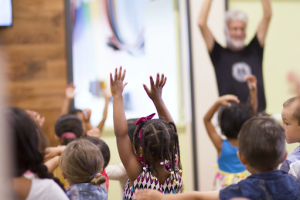
As global temperatures continue to increase, children must learn about how the planet is being affected by human activity and what they can do to help. As parents, we should use our knowledge to educate and bring awareness to our current climate crisis. If you are wondering how to do this, here are some tips on explaining the climate crisis to young children.
Inspire Environmental Wonder
Younger children will have some difficulty understanding topics like ocean acidification, greenhouse gases, and overconsumption, therefore, we should build up to the current climate crisis. Before diving into the discussion, teach them about the environment and its role in our daily lives. The environment has living things that grow when we take care of them. A great way to show this is by planting seeds and showing them the entire process.
Once they start caring for the plant, translate the meaning of the plant to the entire planet. Thus, the child knows that the Earth thrives when we take care of it. The environment, like the plant, must be taken care of and they can help to do that!
Give Examples
Now that the little one is more excited about the planet, it is time to talk about the climate crisis. The way you tell them is entirely up to you. Children are different and process new information differently. However, here is the best way to do so without overwhelming the child (especially since they are currently living through a worldwide pandemic) – give them examples. Below are some ideas!
1. Greenhouse Effect – Bring them to a greenhouse or show them a picture. The main lesson is that the glass structure housing the plants traps sunlight and makes it hot. From there, you can bring it to a large scale. Humanity is doing the same thing when we burn fossil fuels, which release greenhouse gas emissions that trap sunlight in our atmosphere.
2. Going in the Highway – Drive them around a highway to actively show the burning of fossil fuels. The grayish color that comes out will be a great visual of what harming the environment looks like in real life.
3. Tracking Carbon Footprint – Start the activity by placing a “carbon footprint” in the middle of a large piece of paper. The carbon footprint would be made of the child’s black-painted foot since it would make the most sense to them. On one side, have them write everything that makes their footprint increase, and then write all the things that make the footprint go down on the other side. This activity is not only great for motor skills, but it also helps them associate actions with consequences.
Focus on Action – and Hope

Focus on the action by teaching them that they have the opportunity to help the Earth. Giving them a sense of control over the situation might inspire them to learn more and become little environmentalists.
This is probably the most important tip: Younger children have spent a good amount of time learning about a worldwide pandemic, and thus learning about another threat might cause some stress. Due to this, make sure that the child/children are emotionally ready to learn about the harsh realities of our current world. Remember, they can work with others to fix it.
Always remember that children, despite their age, are more than capable of understanding complex topics when introduced properly to them. It is all about finding what makes them comfortable and what will help them.
As the reader, take away what works best for your child/children! All children learn and process things differently.
Best of luck to all of you!
Written by: Isamarie Hernandez Arroyo
